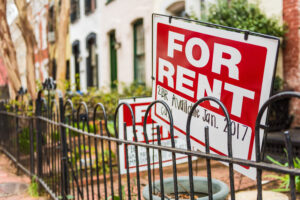Whether you operate a shoe shine stand or a multifamily property your business is built on renewals, or re-occurring income from existing customers. In multifamily, a high percentage renewal rate makes for a much more predictable income stream.
The value of a lease renewal can be quantified. Granted, while different for each property, the amount is one that has a direct impact on asset value, particularly when multiplied by their effect on year-over-year Net Operating Income.
Lower turnover, higher profitability
Focusing on renewals has significant downstream impact on operations. Each renewal equals one less turnover (make-ready) making the math pretty easy. Use the following math to calculate savings from increases in renewals.
A) What is the average costs of a single make-ready?
B) What is the average costs of gaining one renewal?
Cost of A minus the cost of B equals direct savings from eliminating a single turnover.
Now let’s apply this to a 100 units development that is experiencing 50% turnover versus the same development with 25% turnover.
If the average costs of each turnover is $650, then fifty turnovers per years cost $32,500. Reducing turnover from to 25% from 50% saves $16,250. Thus, expenditures to secure renewals in any amount less than $16,250 generates real savings.
But wait! There’s More!
This is just the initial, easy-to-calculate savings. The “real” savings comes from the reduction in days vacant. Each renewal removes turnover expenditures and days vacant for that particular unit.
In our example from above, with turnover reduced to 25% from 50%, assuming that days vacant were 15 days with rents at $900, then the revenue generated from avoiding these days vacate equates to $11,250 (25 units each vacant for two weeks).
Additional costs savings from increases in the renewal rate show up in the form of make-ready overrun cost avoided, the potential necessity of flooring and fixture replacements and appliances.
The next layer of savings comes in the form of management administrative time. Maybe a little more difficult to quantify, but a costs all the same. This includes leasing and make-ready oversight, for example.
Consider the impact on value for properties under your control. What is increase in property value derived from one additional dollar to net income? Now multiply that times $50,000 or $100,000.
By JOHN WILHOIT JR.
Republished with permission from Mr. John Wilhoit, Jr. To view the original article, please visit MultifamilyInsight.net.
John Wilhoit, Jr. is President of Wilhoit Investment Network, LLC, (WIN LLC) an owner and asset manager of apartments, condominiums and town homes. Mr. Wilhoit’s career has focused on high volume, large-scale multifamily communities including market rate and mixed-finance developments. He has previously held positions with the U.S. Department of Housing and Urban Development (HUD), Apartment Investment Management Company (AIMCO) and the Maryland Housing fund.







